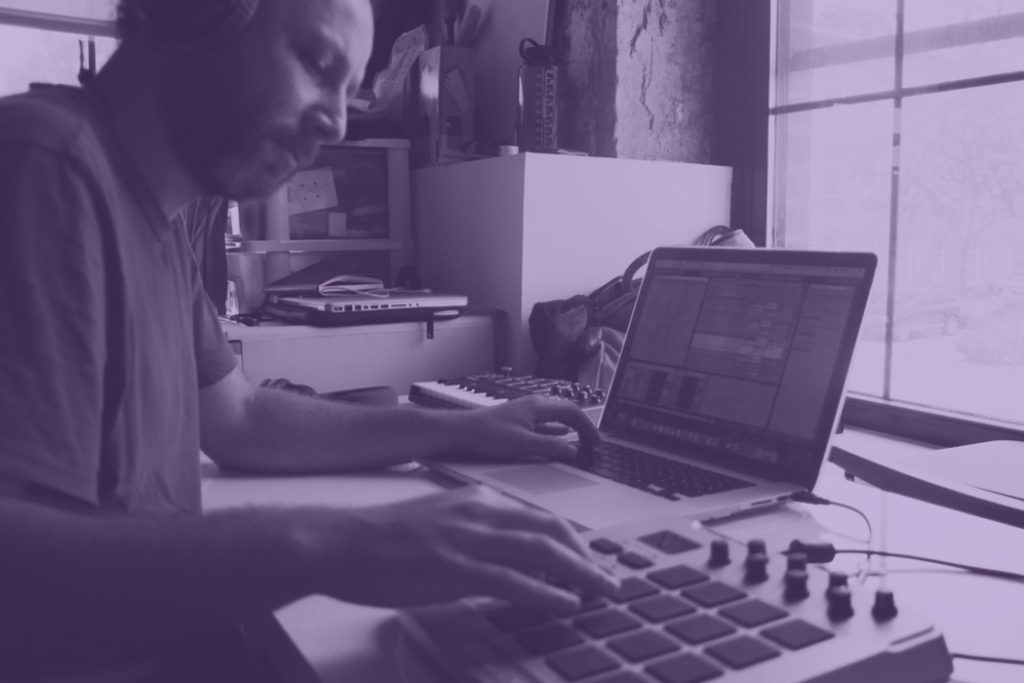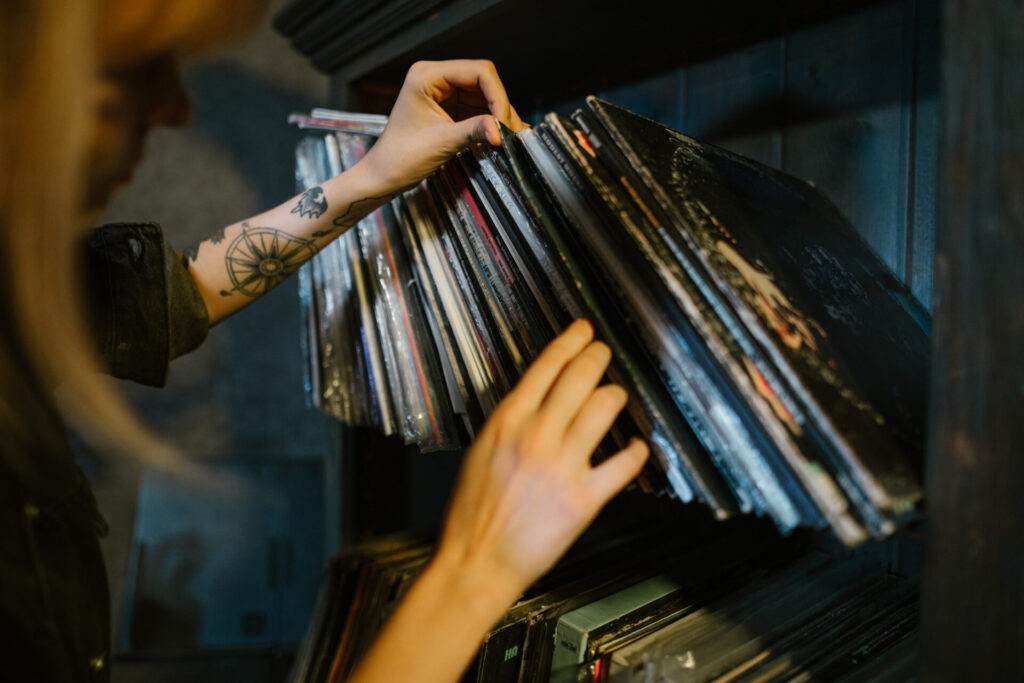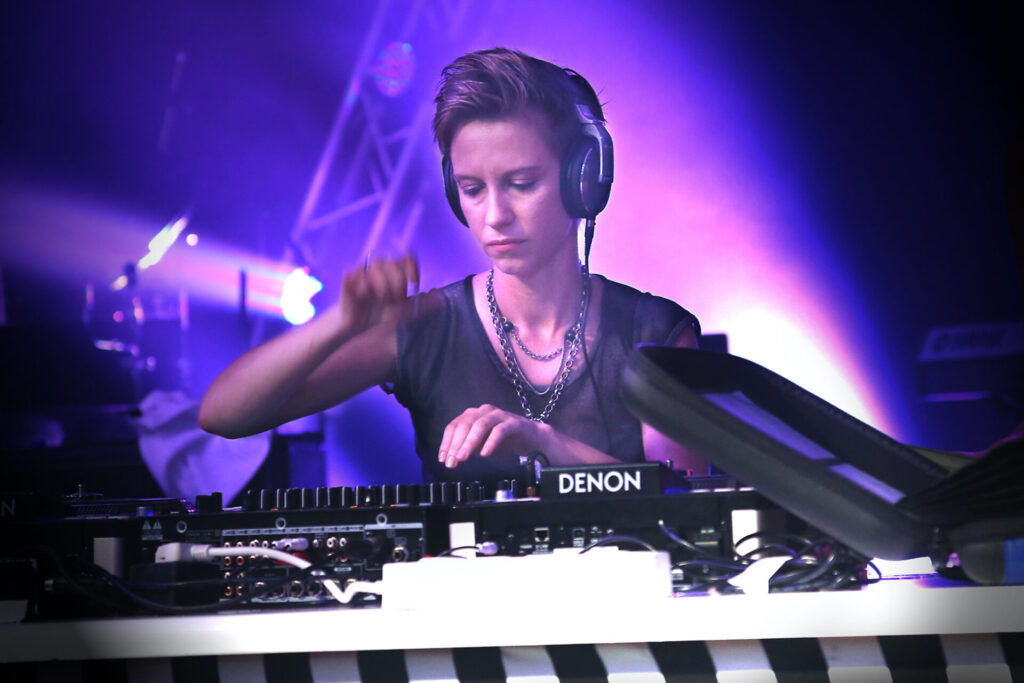+ Learn to create and arrange original, instrumental hip-hop music from sampling pioneer RJD2 himself in his new course on Soundfly, RJD2: From Samples to Songs.
Despite its deep roots in musical tradition, covering and sampling other artists’ work is a sticky topic. Some songwriters have no issue with drawing inspiration from existing songs and sounds, while others insist it’s “cheating” and prefer a more traditional approach to songwriting. If you’re in the second camp, we offer sincere and heartfelt admiration for your purist approach. If you’re in the former, we want to assure you that you’re in great company (see: “the entire genre of hip-hop”).
More to the point, we want to make sure you’re aware of the legal ramifications of recording or incorporating other artists’ work when it comes to the (let’s face it) sometimes confusing world of music publishing. While registering covers and samples is an increasingly common practice, you should know the upsides and downsides of covering and sampling before you start building sample-based tracks, or recording cover versions of existing songs.
Conceptually speaking, covering and sampling could be treated as two sides of the same coin: they both describe the use of pre-existing material, covers involving the intellectual use and sampling the literal use.
Legally however, the ramifications for songwriters and music creators is a bit different. So in this article, we’re going to treat them as two related but distinct subjects.
But first, if you’re producing hip-hop beats and looking for inspiration, creative alternatives, and to explore the work of one of the most influential beat makers of this century, look no further. Check out Soundfly’s new course with turntablist and sampling pioneer, RJD2: From Samples to Songs — he explores his creative process in detail, breaks down some of his most famous beats, and flips samples in real time.
On Covers: Covering the Bases
“As a songwriter, you have an umbilical cord to the song and it’s hard to expand on your understanding of the lyrics. Whereas when you cover a song you can create your own reason why you’re attached to it.” – K.D. Lang
No topic divides the musical community quite like the subject of cover songs. In one camp, covers are scorned as cop-outs, an easy ploy for a warm audience response or quick filler material when you’re a song or two short of a complete set.
For many others, covers are an emotional mainline back to a moment or an experience, a way to touch on the eternally regenerating creative current that powers all songwriters and artists. As Ms. Lang so succinctly expressed, they’re a way of reframing what’s been said before through the lens of your own experience.
Because the very notion of covering songs has such a well-established history, the legal procedure is fairly straightforward. If you want to record and release a cover song, you first need to obtain a mechanical license. You’ll most likely do this either through the music publisher (i.e., the owner of the composition), or a third party such as the Harry Fox Agency or Easy Song Licensing. You can also search for the publisher in the databases of ASCAP, BMI, SESAC, and SOCAN.
Alternately, you can apply directly with the U.S. Copyright Office through a formal “notice of use” procedure, but there are disadvantages to this approach, and most people tend to go through the publisher or a third-party licensing agency.
As the name might suggest, the term “mechanical license” dates back to the 19th century, when it was the pump-operated player piano kicking it in the living room, not the Akai MPC. Sheet music publishers believed that the performance of the perforated rolls of paper used by these automated pianos violated copyright law. Though they initially lost the case, lobbyists for the music industry successfully petitioned Congress to enact the Copyright Act of 1909. Since then, it’s been continually updated to reflect current technology, such as ringtones.
Another way that mechanical licenses are “mechanical” is that they cover a specific number of copies of the song, whether they’re physical items, like vinyl records, or digital downloads. In other words, when you apply to the publisher for the mechanical license to a particular song, you’ll buy the licenses in set increments (such as 100 or 1,000). In the United States, you’re compelled to buy the mechanical license up front; elsewhere in the world, it’s typically only paid upon purchase or download of the song.
And regardless of how popular the song you’re covering is, the rate you pay per license doesn’t change. The current statutory mechanical royalty rate for physical recordings (such as CDs) and permanent digital downloads is 9.1¢ for recordings of a song five minutes or less, and 1.75¢ per minute (or fraction thereof) for those over five minutes. That’s good news for those of us drawn to covering, say, Ed Sheeran. But remember: regardless of whether you sell, give away, or completely forget about your version of the song, you’ll need to buy a mechanical license for each copy (plus whatever service or administrative fee the publisher may charge you, typically on the order of $20 or so).
One more word of advice: while some licensing agencies promise turnaround times of a business day or two, it’s sometimes not that simple. Bart Day, a longtime Pacific Northwest attorney specializing in music law, has this to say:
“This is important: Don’t wait until the last minute before your record release! It can take some time to get the necessary documents signed, especially if you need to deal directly with the music publisher. And mechanical license documents often require that the credits read in a certain specified way, and you’ll need to know what that text is so that you can have it printed correctly in your artwork for the record.”
Bart’s website provides a wealth of information on music law, including more detailed information on recording cover songs.
+ Learn more on Soundfly: Discover unknown royalty and licensing-based revenue streams and how to collect them with Ari Herstand’s new online course, How to Get All the Royalties You Never Knew Existed!
A Sample of Sampling Law
“A big part of making music is the discovery aspect, is the surprise aspect. That’s why I think I’ll always love sampling. Because it involves combining the music fandom: collecting, searching, discovering music history, and artifacts of recording that you may not have known existed, and you just kind of unlock parts of your brain, you know?” – Wouter “Wally” De Backer (Gotye)
While it has a much shorter backstory, sampling — or the use of sections of another artist’s actual recording — is an even more contentious subject than covering existing songs. While some artists scorn the very idea, others — such as multi-platinum seller Gotye quoted above — lean on them as creative tools as second nature.
Whatever your take on using samples, we’ll start by getting the bad news out of the way first: it’s harder — sometimes much harder — to get clearance for samples than it is to obtain mechanical licenses for covers. Unlike cover songs, licenses for sample use aren’t compulsory, meaning that the rights holders can refuse to clear the sample outright, or demand a significant advance and/or a percentage of sales. Did you catch the words “rights holders?” In order to legally use a sample from a copyrighted song in your own music, you need not one, but two, different licenses.
One is for the use of the master recording (which is often owned by a record label or by the original artist). The other is for the usage of the underlying composition, which — like in the example of cover songs — is controlled by the publisher or songwriter.
As with cover songs, to get clearance you’d need to reach out to the publisher through one of the databases listed above, and find the owner of the master recording. This second part can be more difficult, as labels often fold or change ownership as they and their catalogs are absorbed into larger conglomerates.
There are exceptions. In some cases, the copyright on the original work has expired and not been renewed, and some artists and labels actively encourage sampling. There are also new companies like TrackLib that are advocating for making sampling easier to obtain. But on the whole? Getting clearance is often difficult, time-consuming, and expensive.
When You Fight the Law and the Law Wins
With a legal landscape this challenging, it’s no wonder some artists routinely flout copyright laws by incorporating uncleared samples. Naturally, we don’t recommend or condone such practices, but we can’t deny that they occur.
Results can be mixed. Yes, many samples go unnoticed, either because they’re sufficiently altered to defy recognition, or because the artist using them lacks the wide recognition to merit legal notice.
That said, hoping your music won’t be popular enough to attract the attention of producers and record labels is counterintuitive. British band The Verve learned this the hard way, when they were obliged to forfeit all of the royalties for their platinum-selling “Bittersweet Symphony” because it incorporated an uncleared sample.
And choosing covers — or too many of them — entails risks as well. Soft Cell’s version of Gloria Jones’ “Tainted Love” was a worldwide smash, and the top-selling single in the UK in 1981. Unfortunately, the band chose another cover, The Supremes’ “Where Did Our Love Go,” as the B-side, guaranteeing they would earn next to nothing on record sales.
Whichever route you decide to take, our hope is that you base your decision of whether or not to cover or sample other artists’ work upon a solid understanding of the legal implications. We want you to find your inspiration, follow your muse, and sing to your heart’s content.
We just want you to do it legally.
Improve all aspects of your music on Soundfly.
Continue learning about beat making, sampling, mixing, vocal recording, and DIY audio production, with Soundfly’s in-depth online courses, including The Art of Hip-Hop Production, Modern Mixing Techniques, and RJD2: From Samples to Songs.
—
 Seth Lorinczi is a writer and musician. Born in Milwaukee, Wisconsin, but raised in Washington, D.C., he participated in the punk scene that centered largely around Dischord Records. Whether writing words or music, his goal is to find the latent threads of meaning and emotion in our workaday lives, so that he can uncover them and write uncomfortably revealing blogs later. His musical persona is called 2-Track Mind.
Seth Lorinczi is a writer and musician. Born in Milwaukee, Wisconsin, but raised in Washington, D.C., he participated in the punk scene that centered largely around Dischord Records. Whether writing words or music, his goal is to find the latent threads of meaning and emotion in our workaday lives, so that he can uncover them and write uncomfortably revealing blogs later. His musical persona is called 2-Track Mind.





